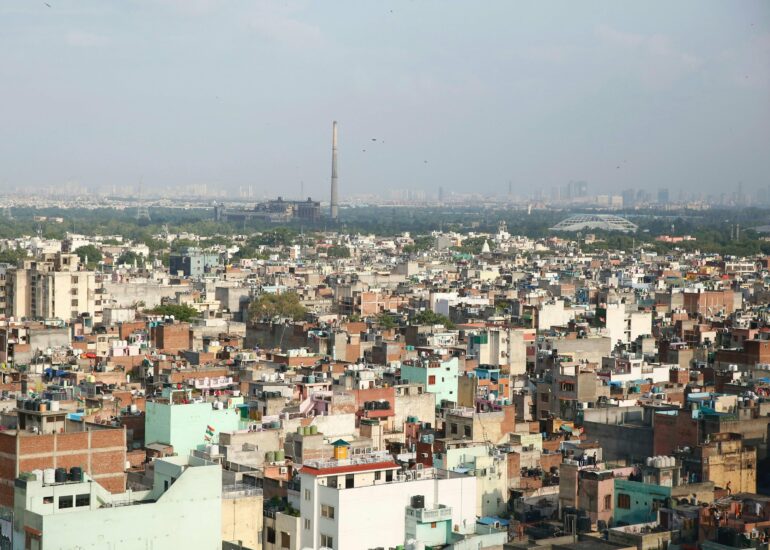An international study led by atmospheric researchers at PSI shows for the first time what portions of particulates in the air over northern India are especially harmful to health.
Nowhere else do people breathe air as dirty as in India. According to the World Health Organization, as many as 1.3 million deaths per year on the subcontinent can be attributed to polluted air.
With its National Clean Air Program, the Indian government wants to enact countermeasures. To do this, decision-makers need to know what sources the particulates come from, how they are distributed regionally, and how harmful certain compounds are to human health. This important information has now been provided for the first time by a study led by members of the Laboratory for Atmospheric Chemistry at PSI, with partners from India, China, Germany, Denmark, France, Spain, and Switzerland.
The researchers have not only determined the amounts and origins of particulates in the air, but also their oxidative potential—an important factor for the harmful effect a chemical compound can have on living cells and thus on health. The study has now been published in the journal Nature Communications.
The focus of the study was on the Indian capital New Delhi, and not for the first time. Of all the cities on Earth, it is considered the metropolis with the highest concentration of particulates in the air. Over the past four years, the researchers had already gained groundbreaking insights into the air pollution there. In a study from 2023, they demonstrated for the first time that chemical processes run differently in the skies over New Delhi than in other major cities.
Incomplete combustion is the primary cause
This time the team was interested in the sources of particulate emissions and the pathogenic effect of certain substances. According to the study, incomplete combustion plays an especially big role in polluting the air. Even non-experts recognize this: “If it smokes, the combustion is incomplete,” explains Imad El Haddad. He and André Prévôt from the Laboratory for Atmospheric Chemistry at PSI led the latest study.
Most notably, the burning of biomass or waste is a major contributor to the formation of particulates and smog. This includes the burning of cow dung for heating and cooking, which also produces high levels of particulate matter. Added to this is the outdated vehicle fleet, especially the small vehicles called tuktuks, widely used in India, and motor scooters with inefficient two-stroke engines.
To better assess the local and regional distribution of particulates, the team expanded the network of measuring sites compared to the previous study, adding two locations in the urban area of New Delhi, one in the area surrounding the capital, and one in Kanpur, about 500 kilometers southeast of the capital. The samples from these sites were examined at PSI by means of mass spectroscopy to determine their composition.
Particulates cause oxidative stress
The quantity of particulates in the air is an important factor—but not the only one. How harmful to health a dust particle is depends on its chemical composition and its oxidative potential. Simply put, this refers to the stress that a chemical compound puts on living cells and, ultimately, entire organs such as the lungs or blood vessels. This stress can lead to asthma, inflammation, hypertension, and other illnesses.
The team determined this oxidative potential and correlated it with local and regional particulate sources. Despite the fact that the chemical composition of particulates was different at different locations, the high oxidative potential of organic aerosols in particular traces back to the incomplete combustion of biomass and fossil fuels, together with their organic oxidation products in the atmosphere.
Compared to Europe or China, a larger proportion of these components are emitted locally, with a still substantial contribution from regional sources. This is consistent with the findings of last year’s study.
For program leader André Prévôt, the four-year program was a complete success and an important contribution to the assessment of air quality for the 900 million people living in the lowlands of the Ganges River. “Nevertheless, we still have a long way to go,” Prévôt says.
“India needs strict measures and long-term monitoring, as well as societal change and better public awareness of environmental protection.” So it will still take some time before environmental conditions in northern India improve.
More information:
Deepika Bhattu et al, Local incomplete combustion emissions define the PM2.5 oxidative potential in Northern India, Nature Communications (2024). DOI: 10.1038/s41467-024-47785-5
Provided by
Paul Scherrer Institute
Citation:
How to clean up New Delhi’s smoggy air (2024, April 26)
